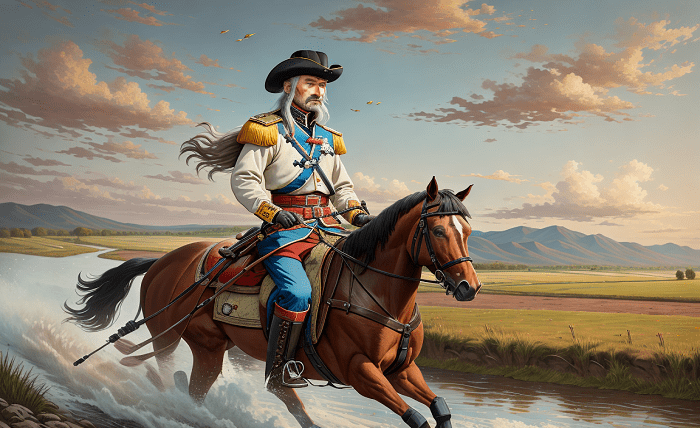Greetings, fellow history enthusiasts! Allow me to take you on an enthralling adventure that spans continents, generations, and family histories. As a genealogist fueled by a passion for unraveling the past, I recently found myself on a journey that led me from an investors meeting in the USA to the heart of Europe’s historical roots. What began as a chance encounter with Andrey, a Kovalev family member ignited a trail of discovery that connected the dots between two captivating stories I had previously explored.
In a world where surnames hint at long-forgotten histories, my encounter with this man piqued my curiosity, as his surname carried echoes of a history that spanned the vast lands between Poland, Ukraine, and Russia—a migration tale that often saw family names transform over time. Probably you are aware of the ancient family name transformations, like that:
Partial Evolution:
Sokół – Sokol – Sokolov: This progression illustrates the transformation of a surname from Polish (Sokół) to Ukrainian (Sokol) and finally to Russian (Sokolov). The common thread across these variations is the word “sokol,” meaning “falcon” in all three languages.
Kovacs – Koval – Kovalev: Originating from Hungarian (Kovacs), which denotes “blacksmith,” the name transformed into Koval (also in Ukrainian). When transplanted into the Russian context, the suffix “ev” was added to the Ukrainian surname. In Russian surnames, this ending signifies “son of” or “descendant of.” While a complete conversion could have led to “Kuznetsov,” meaning “blacksmith” in Russian, the term “koval” does not exist in Russian.
Kowalski – Kovalenko – Kovalyov: A common Polish surname, Kowalski, rooted in the occupation of a blacksmith, might evolve into Kovalenko in Ukraine. Further adaptation could lead to Kovalyov in the Russian realm.
Complete Transformation:
Szabo – Shevchenko – Shevchuk: Originally a Hungarian surname often linked to tailors, Szabo could evolve into Shevchenko in Ukraine, maintaining a connection to the original occupation. In the Russian context, it might further transform into Shevchuk.
And so, when I came back home,as the conversation with this man was quite interesting, and he felt like not an ordinary person, I delved deeper into the Kovalevs’ ancestral journey. Unfortunately, I could not find his contact later on, but still the facts are so interesting that they are worth sharing anyway.
My quest took me back in time, to the early 17th century, where the Kovalski family stepped into the limelight of history. A tale that had all the makings of a blockbuster—noble titles, ancient lineages, and unexpected connections—unfolded before me. Lord Moritz von Gehlen, Edler Herr von Nordenburg, a figure steeped in grandeur, graced the stage of the late 16th century. This enigmatic persona was bestowed the prestigious title of “Edler Herr” by none other than Albert, Duke of Prussia, in April 1521. The echoes of this noble recognition reached the ears of Charles V, Holy Roman Emperor, who officially endorsed the lordship in 1524.
Imagine the intrigue—the Kovalski family, resilient and steadfast, found themselves woven into this very fabric of history. Through twists of fate and alliances, they became the torchbearers of this noble title.
But the history of the Kovalevs was not merely a narrative of titles and connections—it was also intricately linked to the ebb and flow of migrations that shaped Eastern Europe. As my research deepened, I stumbled upon a particularly fascinating chapter—the Polish migrations to Eastern Ukraine.
Picture the landscape: Eastern Ukraine, with its sprawling fields and bustling villages, became a melting pot of cultures, languages, and traditions. It was during the 17th century that waves of Polish settlers embarked on a journey that would forever alter the region’s tapestry. Drawn by fertile lands and economic opportunities, Polish settlers began to establish communities, leaving an indelible mark on the local culture.
The intertwining of Polish and Ukrainian cultures birthed a unique fusion—a blend of languages, traditions, and even surnames. The surname transformations that I mentioned earlier became emblematic of this fusion, acting as linguistic bridges that bridged the gap between cultures.
Take, for instance, the surname “Kowalski” (or “Kovalski”), rooted in the occupation of a blacksmith. As this Polish surname mingled with the Ukrainian landscape, it morphed into “Koval” (sometimes also written as “Kovalenko”), reflecting not just a name but a shared history of craftsmanship and toil. And as generations passed, the journey of this surname didn’t stop—it continued to evolve, carrying with it the whispers of Polish migrations and Ukrainian influences. “Kovalyov” (or “Kovalev”), a Russian iteration of the name, stands as a testament to the dynamic interplay between these cultures.
Now, returning to the Kovalev family, a descendant of this historical confluence, I marveled at the connections. The story of the Kovalski family’s nobility in the late 16th century seamlessly intertwined with the broader narrative of Eastern Europe’s cultural tapestry. It’s as though their history, too, was etched with the ink of migrations, their legacy a symbol of the connections that transcend borders.
As I continued my research, a sense of awe washed over me. The Kovalevs’ journey wasn’t confined to a single era or geographical boundary—it was a thread woven into the very fabric of history. From the noble halls of Edler Herr von Nordenburg to the bustling villages of Eastern Ukraine, their story mirrored the resilience, adaptability, and richness of Eastern Europe’s history.
So, whether you’re a history buff, a curious wanderer, or someone seeking the whispers of their own ancestral past, let this journey inspire you. As genealogists, we’re not just detectives of the past; we’re storytellers who unveil the narratives that make us who we are. And as I continue to trace the footsteps of the Kovalevs’ migration, I’m reminded that history isn’t just a distant echo—it’s a living, breathing tale that’s waiting to be discovered, shared, and cherished.



